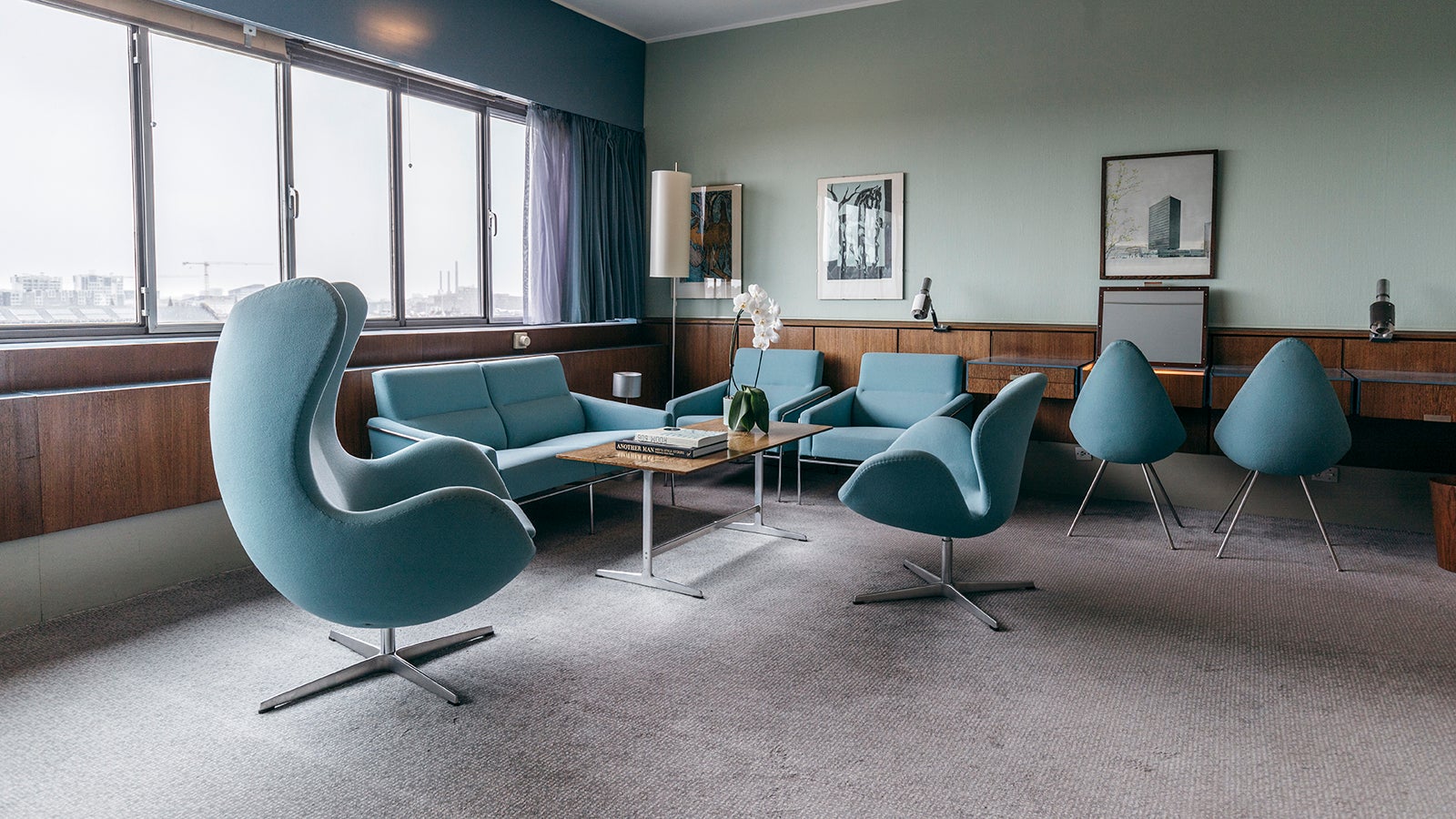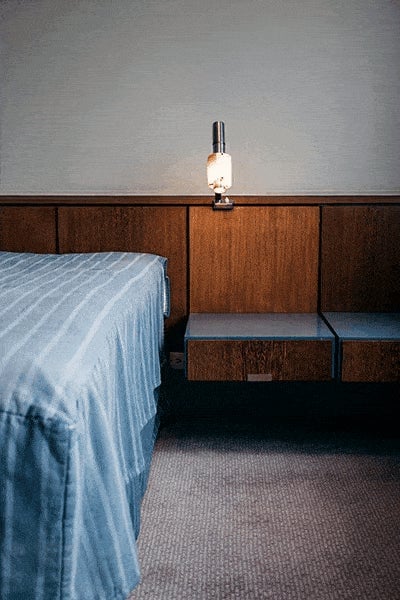Inside the hotel that created a design movement
In the centre of Copenhagen lies a hotel that punctuates the skyline. At just shy of 70 meters, the minimalist building may look like an office block, but behind its glass facade lies a secret. Dubbed “the world’s first design hotel,” this Danish landmark is the birthplace of some of the most coveted furniture and homeware designs today.


In the centre of Copenhagen lies a hotel that punctuates the skyline. At just shy of 70 meters, the minimalist building may look like an office block, but behind its glass facade lies a secret. Dubbed “the world’s first design hotel,” this Danish landmark is the birthplace of some of the most coveted furniture and homeware designs today.
Designed by architect Arne Jacobsen for airline SAS in 1955, The Royal Copenhagen is a mid-century design masterpiece. Far more than just designing the structure, Jacobsen’s plans covered everything from candle holders, silverware, and door handles, to the now iconic Egg and Swan chairs that adorn pages of glossy magazines. In fact, many of the pieces created for the hotel have now become globally regarded as design classics and are still available today.
Opened in 1960 to divided public opinion, the city’s first skyscraper was scorned by residents of the traditionally low-rise capital, saying it looked like a computer punch card. Housing a cafe, bar, and perhaps unusually, an airport terminal that allowed guests and travelers to check in right from the lobby before being bussed to their plane (this was long before the days of airport security), the hotel has recently undergone a renovation. One room however, remains true to Jacobsen’s original design.
Step inside room 606
Set on the sixth floor, overlooking the Tivoli Gardens and the Central Station, sits a time capsule. Step out the lift and through the unassuming door and you’re immediately taken back to July 1960.
Interact below to explore the room in 360
From the flecked carpet, to the sky blue of the blind pulls, everything is as it was when the hotel opened. Taking cues from the Copenhagen skyline, the dark wood paneling was chosen by Jacobsen to echo the traditional brick much of the city is built from, while the pale blue of the furniture and green walls are a nod to the oxidised copper church steeples and greenery that surround the hotel.
One feature of the room that may be overlooked today are the orchids. Chosen by Jacobsen himself, they were unheard of in Denmark when the hotel opened, and gave guests a taste of international travel. These orchids also took center place in a double height winter garden in the lobby.
The devil is in the detail
Given free reign by SAS–whose logo still crowns the building today–every element of the hotel’s aesthetics were carefully thought out. From the net curtains with a special edging designed to evoke the flowing water that surrounds the city, to the integrated bathroom soap dish, nothing was left to chance. This even extended to the pillows on the bed, or lack thereof. Jacobsen believed they would spoil the overall look, so guests arrived in a pillowless room, only to have them delivered by a member of staff before bedtime.

Not only did he carefully consider the aesthetics of his design, but also its functionality. The built-in bedside tables have two heights and the desk and bedside lamps are all positioned on tracks that allow guests to move them to where they need them most. At the other end of the room, illuminated dressing mirrors open up from the desk, ensuring the room’s clean lines are maintained while not in use.
Hailed by many as Jacobsen’s greatest masterpiece, room 606 is easily one of the most iconic hotel rooms in the world. This isn’t just a museum piece however, it’s available to view and offers guests a chance to step back in time and experience a bygone glamor the jet age ushered in.
Discover more about the Radisson Collection Royal Copenhagen here.